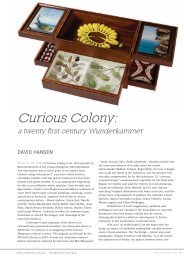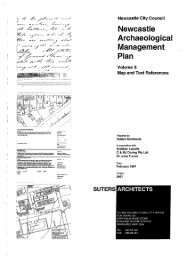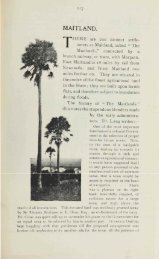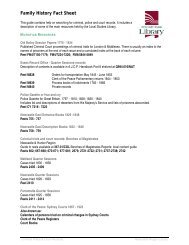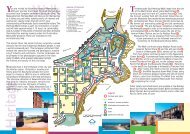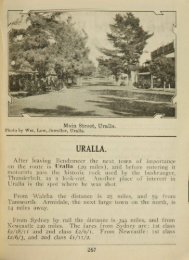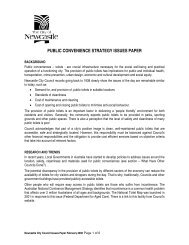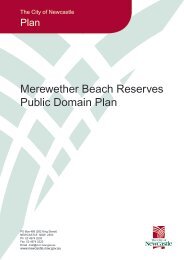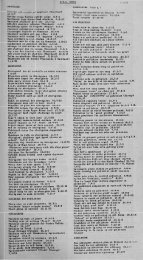Part Two – post 1920s - Newcastle City Council
Part Two – post 1920s - Newcastle City Council
Part Two – post 1920s - Newcastle City Council
You also want an ePaper? Increase the reach of your titles
YUMPU automatically turns print PDFs into web optimized ePapers that Google loves.
When interviewed in 1964 about the Thomas Cook’s house Lucerna, Mrs Cutts<br />
recalled that before 1900 ‘Civic Park was a swamp and horse paddock’. 47 The land<br />
was mostly vacant when the 1889 Illustration was drawn (Figure 24). The land was<br />
still mostly vacant when surveyed in 1896 (Local History Library Map, C 919.442/34-<br />
26, <strong>Newcastle</strong> and Suburbs Sheet 28, copy not included). 48<br />
Subsequently timber millers and merchants Andrew Cook and Robert Breckenridge<br />
used the low-lying land on either side of the coal railway as timberyards. Several<br />
engineering workshops, including Varley’s, were built on the Darby and King Streets<br />
frontages.<br />
In 1921 <strong>Newcastle</strong> <strong>Council</strong> bought the first piece of this land as a railway siding for<br />
the delivery of coal to the Sydney (or Tyrrell) Street power generation plant. When<br />
the Town Hall was nearing completion, lots 46 and 47 (Figure 25) were bought for the<br />
Electric Supply Department but were used instead in association with beautification<br />
of the surrounds of the Town Hall. 49 Mr W Grant of the Sydney Botanical Gardens<br />
provided a simple and inexpensive landscape plan. This was the origin of Civic Park.<br />
Figure 26: Early<br />
beautification of<br />
Civic Park<br />
included an<br />
avenue of fig trees<br />
along the Burwood<br />
coal railway line<br />
In summary, the evolution of Civic Park began with the land owned by the AA<br />
Company prior to 1900s and the land use associated with the AA and Burwood<br />
Companies railways. Timberyards were established on either side of Burwood<br />
Railway in the early 1900s. Property resumed in <strong>1920s</strong> by <strong>Council</strong> for the Electrical<br />
Supply Department was used instead for beautification of the Town Hall surrounds<br />
and provided the park nucleus. The railway corridor was resumed in the 1950s.<br />
Properties along Darby Street were resumed in the 1960s. A number of landscape<br />
plans followed and the James Cook Memorial Fountain opened in 1970.<br />
15 Christie Park<br />
The land immediately west of Town Hall was vacant in 1929. In the 1930s council<br />
purchased additional land here extending to the Auckland Street corner for offices for<br />
47 Interview with E M Cutts, descendant of Henry Dangar, about ‘Lucerna’, <strong>Newcastle</strong> Morning<br />
Herald 28 November 1964 p. 8<br />
48 <strong>Newcastle</strong> Local Studies Library map C 919.442/34-26<br />
49 <strong>Newcastle</strong> Morning Herald 12 December 1929<br />
<strong>Newcastle</strong> Civic and Cultural Precinct History ~ Cynthia Hunter ~ January 2003 page 34




